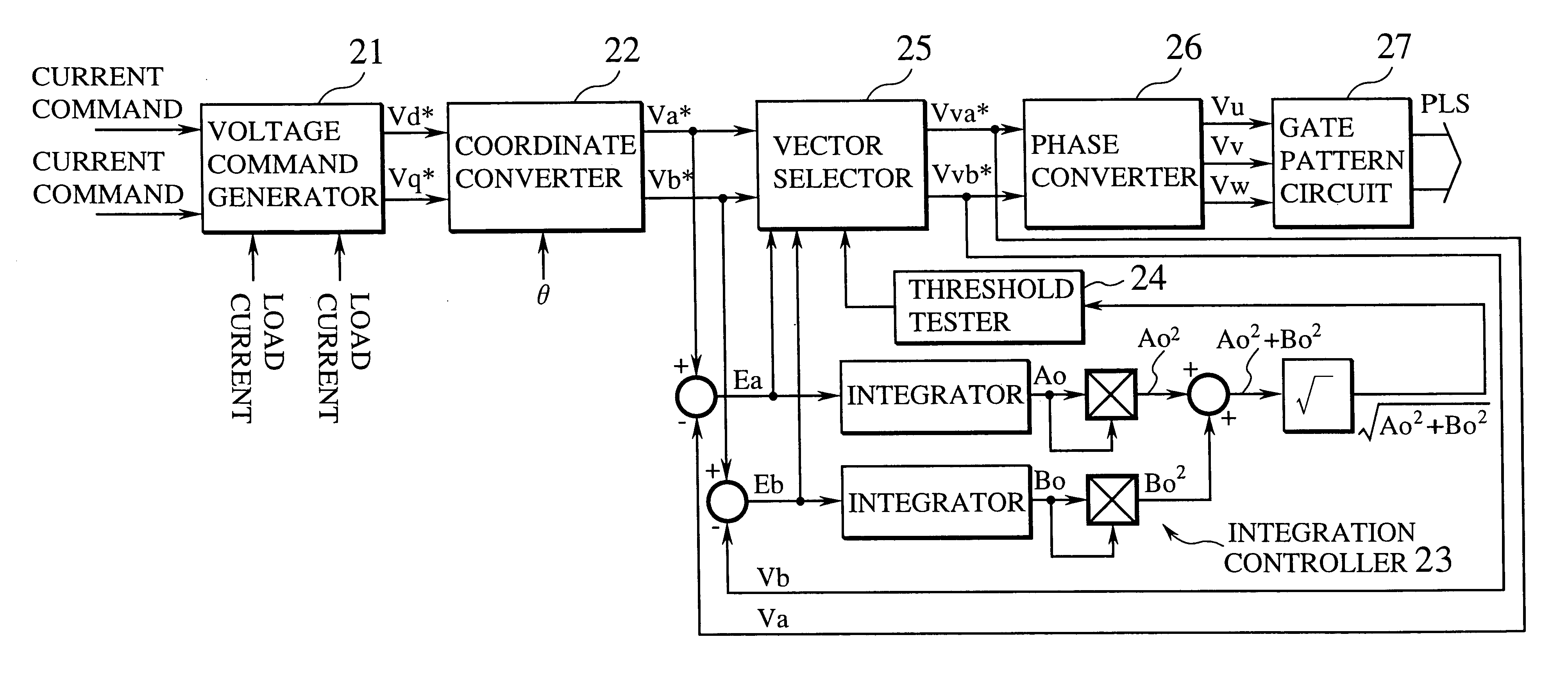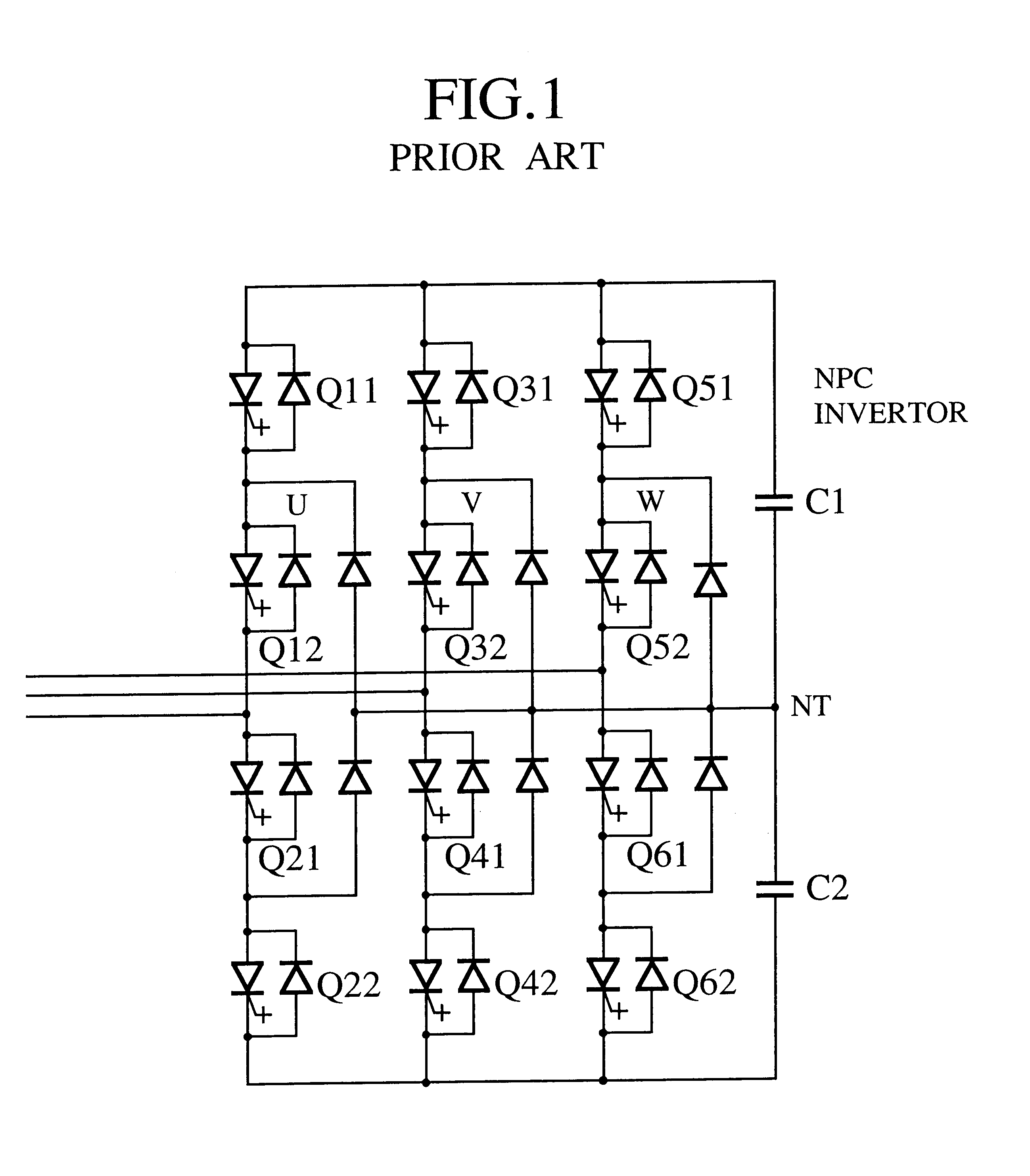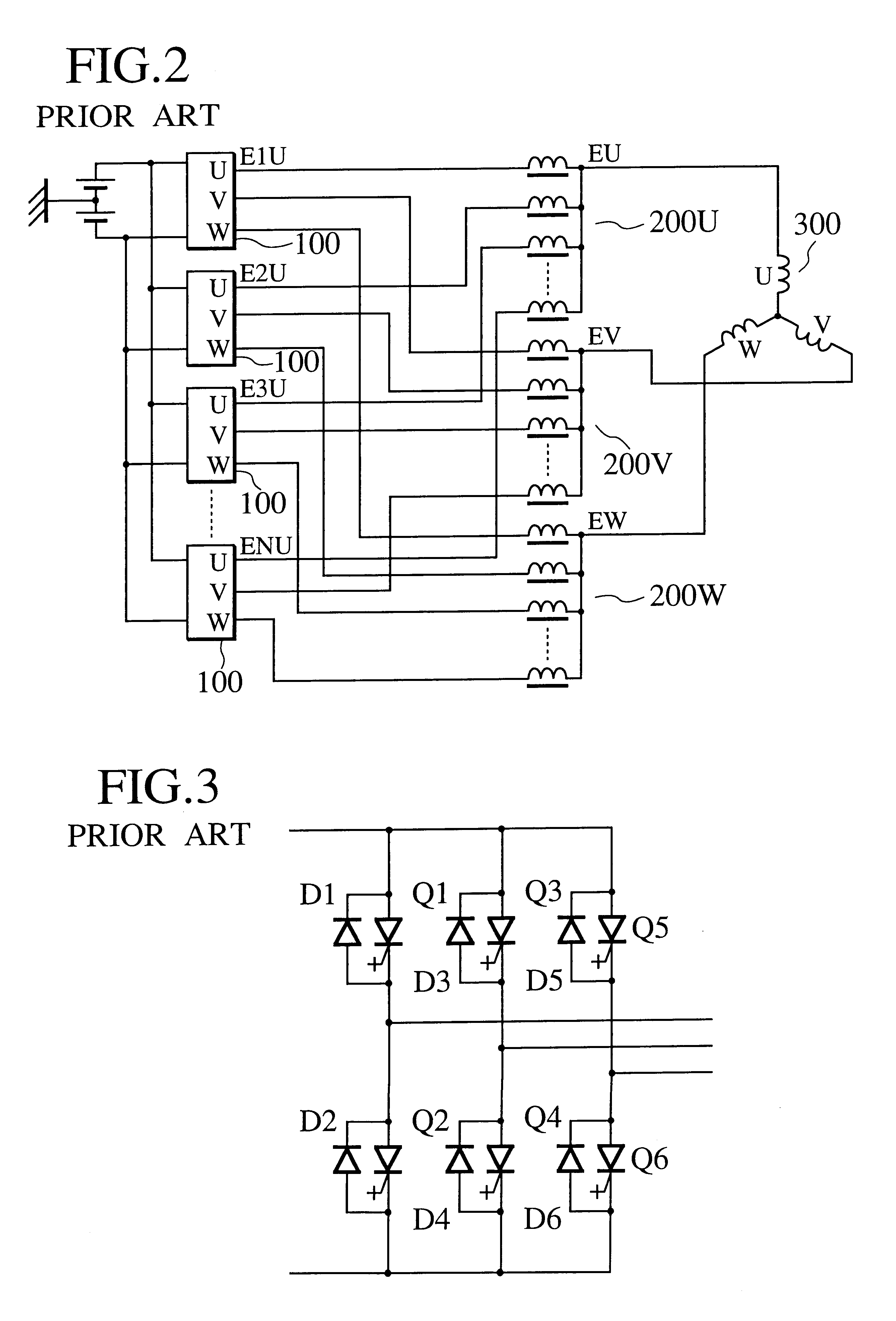Power converting system multiplexed with voltage dividing transformers, the voltage transformers, and controller for the system
a power conversion system and voltage dividing transformer technology, applied in the direction of dc-ac conversion without reversal, process and machine control, instruments, etc., can solve the problem of limiting the constant voltage characteristics, limiting the modulation factor of the npc inverter, increasing the number of switching elements and the cost of the power conversion system
- Summary
- Abstract
- Description
- Claims
- Application Information
AI Technical Summary
Problems solved by technology
Method used
Image
Examples
first embodiment
FIG. 7 shows the structure of the voltage dividing transformer 10U of the The transformers 10V and 10W have each the same structure as the transformer 10U. The transformer 10U has a multi-leg iron core. Legs of the iron core have windings whose numbers of winds are equal to one another in terms of the polarity of a winding direction represented with a dot mark. The structure of the transformer 10U is basically the same as that of a standard transformer. In this embodiment, the transformer 10U has four legs to receive the U-phases of the inverters, respectively.
In FIG. 7, the legs of the iron core are arranged along a straight line. This structure is inexpensive. In actual manufacturing, the impedance values of the windings slightly differ from one another due to structural restrictions. Such differences, however, cause no problem in the power converting system of the present invention.
FIGS. 8 and 9 show other structures applicable to the voltage dividing transformers of the power c...
second embodiment
Although the inverters of the embodiment are 3-phase bridge inverters, the present invention may also employ single-phase-configuration 3-phase bridge inverters, NPC inverters capable of providing output voltages of multiple levels, etc. Although each inverter of the embodiment is of three phases, the present invention is applicable to M-phase inverters as shown in FIG. 10 as the second embodiment, where M is an optional number. In FIG. 10, each one of N (N is an optional number.) inverters is M-phase inverter, and each of M dividing voltage transformers 10-1 to 10-M has an N-leg iron core. A wiring is wound around each of N legs of the iron core. A load 3 is an M-phase load and supplied power from N inverters. of M-phase via M dividing voltage transformers 10-1 to 10-M each having N-legs.
As explained above, the power converting system of the first or second embodiment is parallel-multiplexed with voltage dividing transformers to produce no impedance with respect to a load current. ...
fourth embodiment
A controller for a power converting system according to the present invention will be explained with reference to FIG. 12. The controller controls a power converter such as an inverter of the power converting system. A voltage command generator 21 receives current commands and load currents, and issues voltage commands Vd* and Vq* for controlling actual currents. The voltage commands Vd* and Vq* that are on a rotating coordinate system that rotates in synchronization with a power source are converted by a coordinate converter 22 into voltage commands Va* and Vb* on a static coordinate system to calculate voltage command vectors. An integration controller 23 continuously integrates errors between the voltage commands Va* and Vb* and actual voltage command vectors Va and Vb. A threshold tester 24 determines the size of the integrated value. If the integrated value is above a threshold, a vector selector 25 selects an optimum switching state of the power converter and provides actual o...
PUM
 Login to View More
Login to View More Abstract
Description
Claims
Application Information
 Login to View More
Login to View More - R&D
- Intellectual Property
- Life Sciences
- Materials
- Tech Scout
- Unparalleled Data Quality
- Higher Quality Content
- 60% Fewer Hallucinations
Browse by: Latest US Patents, China's latest patents, Technical Efficacy Thesaurus, Application Domain, Technology Topic, Popular Technical Reports.
© 2025 PatSnap. All rights reserved.Legal|Privacy policy|Modern Slavery Act Transparency Statement|Sitemap|About US| Contact US: help@patsnap.com



